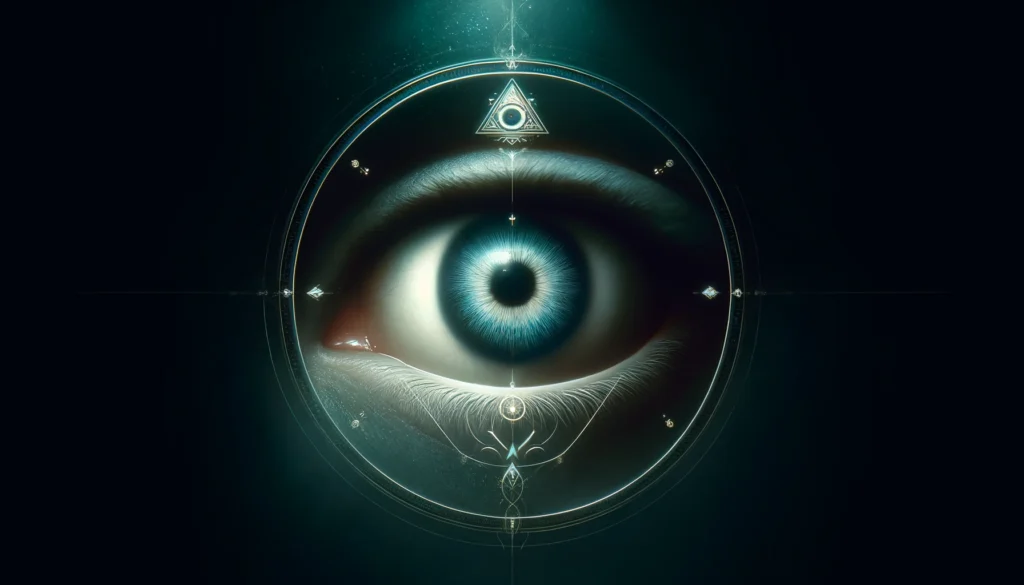Have you ever heard of Usog? If you’re from the Philippines or have Filipino friends, chances are you’ve encountered this intriguing cultural belief. As someone who grew up in a Filipino household, I’ve always been fascinated by our rich tapestry of traditions and superstitions. Today, I’m excited to take you on a journey into the world of Usog, a concept that has both captivated and mystified generations of Filipinos.
What is Usog? Understanding the Basics
The Essence of Usog
Usog, often referred to as the Filipino version of the “evil eye,” is a traditional belief deeply rooted in Philippine folklore. But don’t let the term “evil eye” fool you – it’s not always about malevolence. At its core, Usog is the idea that certain individuals can unintentionally cause harm or illness to others, especially to young children, through their gaze or touch.
The Power of Energy
In my grandmother’s words, “Usog is when someone’s strong energy overwhelms a weaker person’s aura.” It’s believed that people with strong personalities or those who haven’t eaten yet are more likely to cause Usog. Imagine it as an unintentional transfer of energy – like static electricity, but with more significant consequences.
Who Can Cause Usog?
Growing up, I was always told to be wary of strangers or people we hadn’t seen in a while. The belief is that anyone can potentially cause Usog, but some are more prone to it than others. Here’s a quick breakdown:
| More Likely to Cause Usog | Less Likely to Cause Usog |
|---|---|
| Strangers | Close family members |
| People with strong personalities | Individuals you see daily |
| Those who haven’t eaten | Well-fed individuals |
| People arriving from a journey | Local community members |
The Symptoms: How Do You Know It’s Usog?
Telltale Signs
As a child, I remember my mother frantically checking me for signs of Usog whenever we returned from a crowded place. The symptoms can vary, but there are some classic indicators:
- Sudden crying or fussiness in babies
- Unexplained stomach aches
- Vomiting or diarrhea
- Fever without apparent cause
- General weakness or lethargy
The Curious Case of Timing
One of the most intriguing aspects of Usog is its timing. Symptoms typically appear shortly after an encounter with the person believed to have caused it. I recall my cousin suddenly developing a fever just hours after meeting a long-lost relative. Coincidence? Many Filipinos would say otherwise.
Beyond Physical Symptoms
It’s not just about physical discomfort. Some believe Usog can affect a person’s mood or behavior. Have you ever felt inexplicably irritable after meeting someone new? In the Philippines, that might be chalked up to Usog.
The Cultural Significance: Why Usog Matters
A Thread in the Cultural Fabric
Usog isn’t just a superstition; it’s a reflection of Filipino values and social norms. It emphasizes the importance of social harmony and the power of human interaction. In a way, it’s a cultural mechanism that promotes mindfulness in our dealings with others, especially those more vulnerable.
Bridging Generations
As a millennial Filipino, I’ve often found myself caught between modern skepticism and traditional beliefs. Usog serves as a fascinating bridge between generations. It’s a topic that can spark lively debates at family gatherings, with older relatives insisting on its validity while younger ones question its scientific basis.
A Unique Filipino Identity
In an increasingly globalized world, beliefs like Usog help maintain a distinct Filipino identity. It’s a conversation starter, a cultural curiosity that intrigues both locals and foreigners alike. I’ve lost count of how many times I’ve had to explain Usog to my non-Filipino friends, always met with a mix of fascination and bewilderment.
The Prevention and Cure: Warding Off Usog
Preventive Measures
In true Filipino fashion, preventing Usog is all about being prepared. Here are some traditional methods:
- The Power of “Pwera Usog”: This phrase, meaning “away with Usog,” is often uttered by visitors when meeting a baby or entering a new home.
- The Saliva Ritual: Don’t be surprised if an elder dabs a bit of saliva on a child’s forehead after meeting them. It’s believed to prevent Usog.
- Protective Accessories: Many Filipino babies wear red bracelets or have a small red ribbon pinned to their clothes as a shield against Usog.
- The Eating Rule: People are encouraged to eat before visiting others, especially newborns, to reduce their chances of causing Usog.
Curing Usog: Traditional Remedies
If prevention fails, don’t worry – there are ways to cure Usog. These remedies might sound unusual, but they’re deeply ingrained in Filipino culture:
- The Forehead Cross: The person believed to have caused Usog makes a cross sign with their thumb on the affected person’s forehead.
- Oil Application: Coconut oil is often rubbed on the stomach of the affected individual.
- The Clothing Transfer: In some regions, a piece of clothing from the suspected causer of Usog is placed on the affected person.
- Herbal Remedies: Various herbs and plants are used in different parts of the Philippines to treat Usog.
Usog in the Modern World: Adapting Ancient Beliefs
The Clash with Modern Medicine
As a nation progressing in healthcare and education, the Philippines faces an interesting dilemma. How do we reconcile traditional beliefs like Usog with modern medical practices? It’s not uncommon to see families seek both traditional cures and medical treatment simultaneously.
The Psychological Perspective
Some psychologists argue that the belief in Usog itself can have a placebo effect. The rituals and remedies might work because people believe they will. It’s a fascinating intersection of cultural belief and psychological influence.
Usog in Popular Culture
Despite modernization, Usog remains a popular topic in Filipino media. From TV shows to movies, references to Usog are still common, keeping the tradition alive in the public consciousness. I remember watching a horror movie as a teenager where Usog played a central role – needless to say, I slept with the lights on that night!
The Science Behind Usog: Fact or Fiction?
Seeking Scientific Explanations
As someone who grew up with these beliefs but also values scientific inquiry, I’ve always been curious about the potential scientific explanations behind Usog. While there’s no concrete scientific evidence supporting the concept of Usog as traditionally understood, some theories attempt to explain the phenomena associated with it:
- Stress and Anxiety: The sudden onset of symptoms in children after meeting strangers could be attributed to stress or anxiety.
- Autosuggestion: The power of belief can sometimes manifest physical symptoms, a phenomenon well-documented in psychology.
- Coincidental Illnesses: Many symptoms associated with Usog are common in children and could simply coincide with social interactions.
The Debate Continues
The scientific community largely views Usog as a cultural belief rather than a medical condition. However, the persistence of this belief across generations suggests that it serves some social or psychological function in Filipino society.
Usog Around the World: Similar Beliefs in Other Cultures
A Global Phenomenon
Interestingly, beliefs similar to Usog exist in many cultures worldwide. This global presence of “evil eye” beliefs suggests that they might serve a universal human need or arise from common social experiences.
| Culture | Similar Belief | Key Features |
|---|---|---|
| Greek | Mati | Evil eye causing misfortune |
| Turkish | Nazar | Harm through jealous looks |
| Italian | Malocchio | Curse through gaze |
| Indian | Drishti | Evil eye affecting success and health |
Cultural Variations
While the core concept is similar, each culture has its unique take on the “evil eye.” Some focus more on intentional harm through envy, while others, like Usog, emphasize unintentional effects. It’s fascinating to see how different societies have developed similar beliefs to explain sudden illnesses or misfortunes.
Personal Reflections: My Journey with Usog
Childhood Memories
Growing up, Usog was as much a part of my life as adobo and sinigang. I remember my grandmother insisting on performing the “pwera usog” ritual every time we had visitors. As a child, it felt like a magical protection spell, and I’ll admit, it made me feel safe.
The Skeptic Phase
As I grew older and became more exposed to scientific thinking, I went through a phase of skepticism. I questioned everything about Usog and even argued with my parents about its validity. It was a time of cultural conflict within myself – wanting to honor my heritage while also embracing modern, scientific worldviews.
Finding Balance
Now, as an adult, I’ve come to appreciate Usog in a different light. While I may not believe in its literal truth, I see its value as a cultural practice that promotes social cohesion and mindfulness. It’s a reminder of our interconnectedness and the impact we can have on others, even unintentionally.
The Future of Usog: Preserving Tradition in a Changing World
Adapting to Modern Times
As the Philippines continues to modernize, beliefs like Usog face the challenge of remaining relevant. However, I’ve noticed an interesting trend – young Filipinos are showing a renewed interest in traditional beliefs, often blending them with modern practices.
Digital Age Usog
In the age of social media, discussions about Usog have found new platforms. Facebook groups and online forums are buzzing with stories, debates, and even modern interpretations of this age-old belief. It’s as if Usog is getting a digital makeover!
Educational Approach
Schools in the Philippines are taking an interesting approach to traditional beliefs like Usog. Rather than dismissing them, many educators are using these beliefs as gateways to discuss cultural heritage, critical thinking, and the interplay between tradition and modernity.
The Enduring Legacy of Usog
As we’ve explored, Usog is more than just a superstition – it’s a window into Filipino culture, a bridge between generations, and a subject of ongoing fascination and debate. Whether you’re a believer, a skeptic, or somewhere in between, there’s no denying the impact Usog has had on Filipino society.
For me, Usog represents the beautiful complexity of cultural identity. It’s a reminder that our beliefs, no matter how old or seemingly irrational, shape who we are and how we interact with the world. As the Philippines continues to evolve, I believe Usog will too – adapting, transforming, but always remaining a unique part of our cultural tapestry.
So, the next time someone tells you “Pwera usog,” whether you believe in it or not, remember – you’re experiencing a piece of living history, a tradition that has survived generations and continues to captivate minds across the Philippines and beyond.
Disclaimer: This blog post is based on cultural beliefs and personal experiences. The information provided about Usog is primarily folkloric and should not be considered medical advice. Always consult with a healthcare professional for any health concerns. If you notice any inaccuracies in the cultural or historical information presented, please report them so we can correct them promptly.




